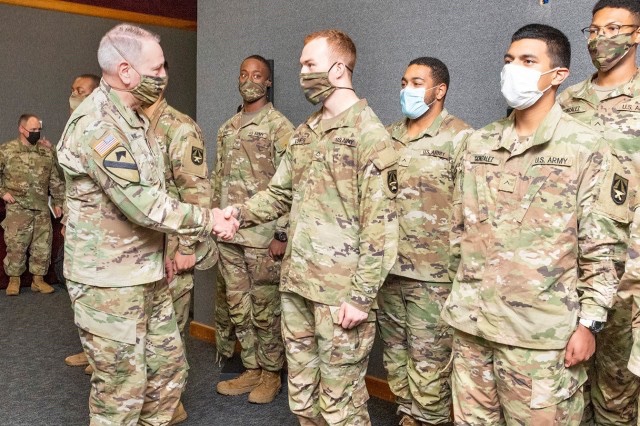
NATICK, Mass. — During an October 26 visit to the U.S. Army Combat Capabilities Development Command (DEVCOM) Soldier Center, Gen. John M. Murray, Commanding General of U.S. Army Futures Command (AFC), was updated on several programs and technologies helping advance two of the Army’s highest priorities — modernization and people.
DEVCOM Soldier Center’s mission, to research and develop science and technology solutions that protect and optimize warfighters on the battlefield, often occurs where these two priorities intersect, and Murray, charged with spearheading the Army’s force modernization efforts, got to see in person some key technologies the center is developing in support of the Soldier Lethality component of modernization.
“DEVCOM Soldier Center is executing a critical facet of the Army’s modernization strategy,” said Murray.
“By researching new approaches to optimize Soldier performance and developing new technologies with consensus from operating units to exceed the capabilities of our pacing threats, they are delivering on the tenets of their mission and reinforcing the Army’s commitment to its people.”
“I saw that in action here today,” said Murray.
The visit began with detailed updates on the progress of DEVCOM Soldier Center’s signature research program, Measuring & Advancing Soldier Tactical Readiness & Effectiveness, or MASTR-E, a comprehensive, data-based research effort to deliver infantry units the capability to measure, predict, and enhance human performance during close combat operations through the use of wearable biometric sensors.
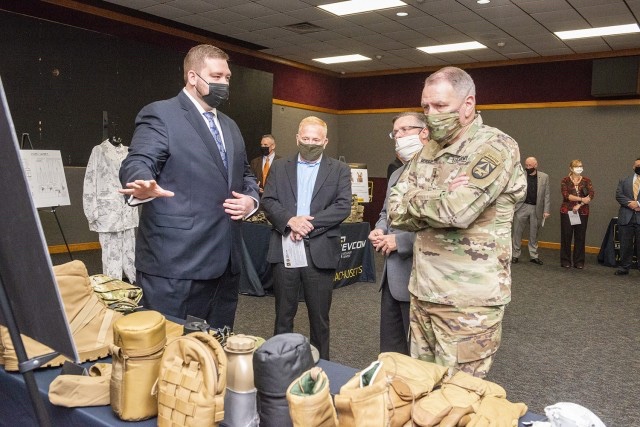
Led by DEVCOM Soldier Center and supported by key S&T partners from infantry units, scientists, and engineers across the DoD, industry and academia, MASTR-E takes an integrated, multi-disciplinary approach to collecting and analyzing human performance data metrics, including physiological and behavioral indicators that give leaders a holistic view of their Soldiers’ status during close combat.
Murray also met with Human Research Volunteer, or HRV, Soldiers during the visit. The HRV program recruits approximately 30 new Soldiers from their Advanced Individual Training to voluntarily come to Natick for a 90-day assignment in which they participate in various human performance based research studies. HRV Soldiers support everything from field testing uniform and equipment items, sleep and nutrition studies, to cognitive, psychological, and physiological performance studies. HRV Soldiers play a vital role in the research and development of new technologies supporting modernization efforts.
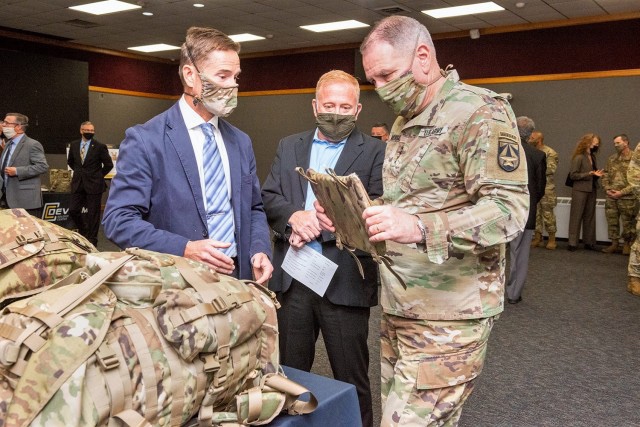
The visit also featured a hands-on display of several innovative technologies being developed by Soldier Center scientists and engineers, including Cold Weather Equipment, Load Carriage Equipment, future body armor prototypes, and the Combat Protective Ensemble, or CAPE.
For Cold Weather Equipment, Murray saw uniform and equipment items being developed through a multiservice collaborative effort guided by seven item priorities with the goal of outfitting an arctic brigade within the next 18 months. The technologies, which included gloves, boots, and layered parker systems, were constructed with novel performance materials with inherent properties that prevent freezing in extreme arctic environments.
The Load Carriage Equipment items included prototype ruck sacks designed to accommodate specific infantry tasks and missions. Soldier Center equipment specialists utilized end user feedback collected during Soldier Touchpoint evaluations to redesign the placement of straps, buckles, ammunition and utility pouches, and ballistic plate carriers to develop lighter, streamlined prototypes more conducive to foundational infantry tactics like shooting and moving to contact.
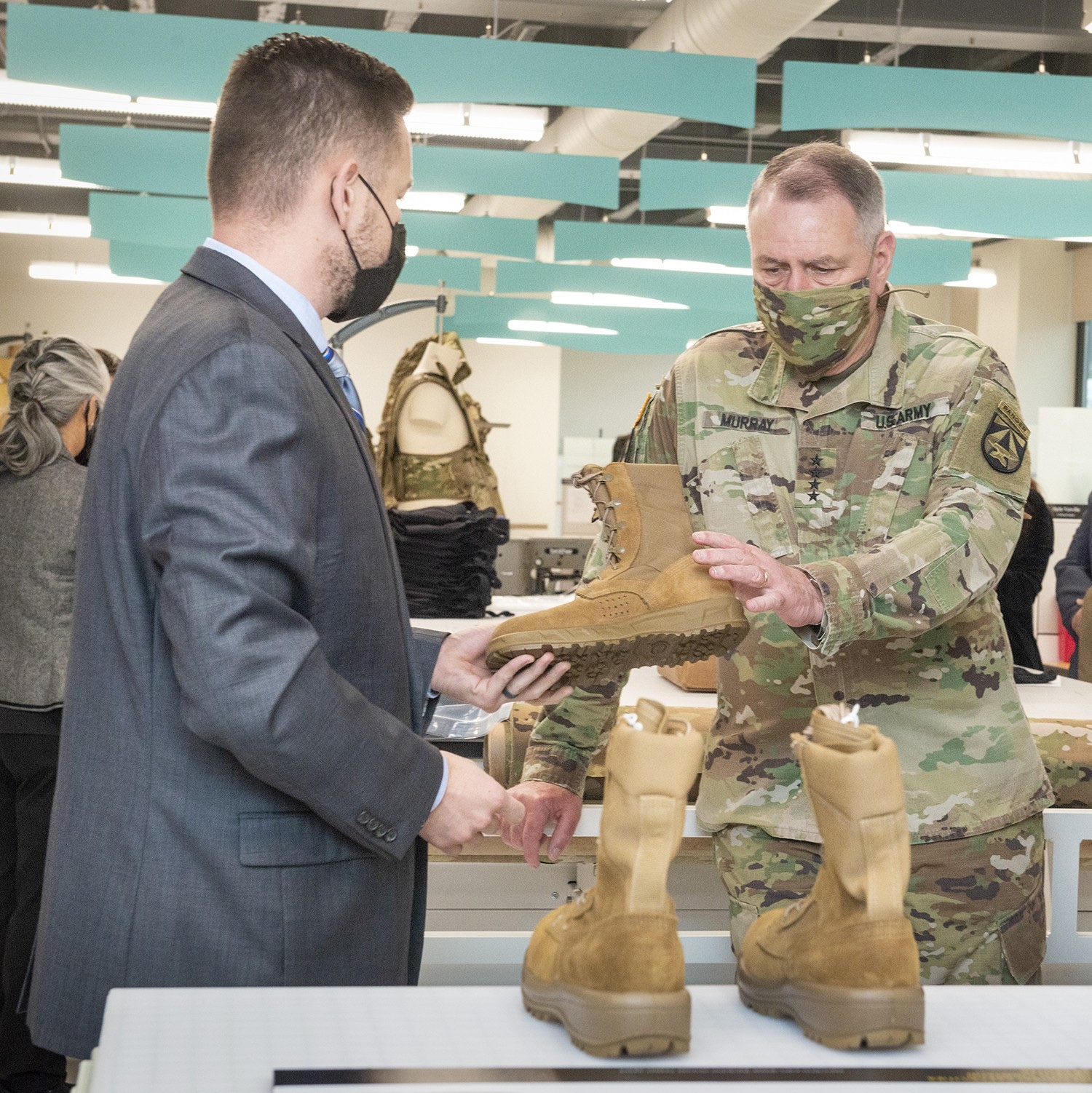
The future body armor items displayed took a similar approach to their design, in which plate carrier systems were built based on the threat level. Researchers are working to reduce the overall weight of body armor prototypes while maintaining ballistic protection against the majority of round calibers and blast threats faced on the battlefield.
The CAPE program addresses the challenge of having multiple Soldier-worn equipment systems by incorporating novel performance fabrics and materials in order to maximize Soldier protection and survivability, while optimizing the distribution of power and data.
After the equipment display, Murray visited the Design Pattern Prototype Studio, where he was shown several Soldier Center developed products under the Organizational Clothing and Individual Equipment program, including the Female IOTV, the Physical Fitness Bra, the Female Urinary Diversion Device, or FUDD, and the Improved Hot Weather Combat Uniform — Female, or IHWCU-F — items that support the role and performance of female Soldiers in combat.
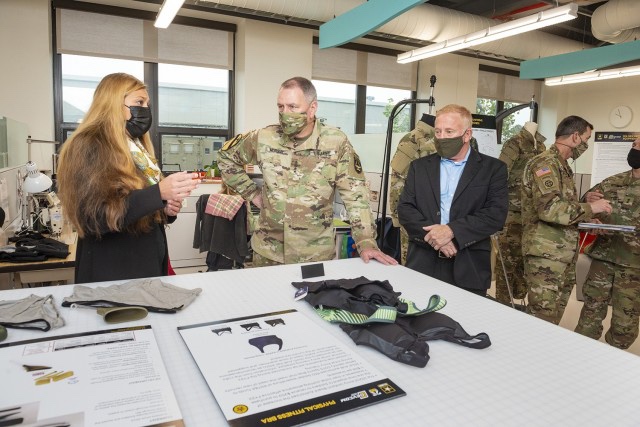
The last stop of Murray’s visit was to the Combat Feeding Division for an overview presentation, ration display, and tour of the pilot kitchen where new items are created. At CFD, Murray saw the Close Combat Assault Ration, or CCAR, a one-day ration designed to sustain dismounted warfighters for seven days operating autonomously without resupply. The CCAR includes nutrient-dense items made using Microwave Drying Technology, which reduces the weight by about 75 percent and volume by 40 percent from an MRE, the standard individual ration.
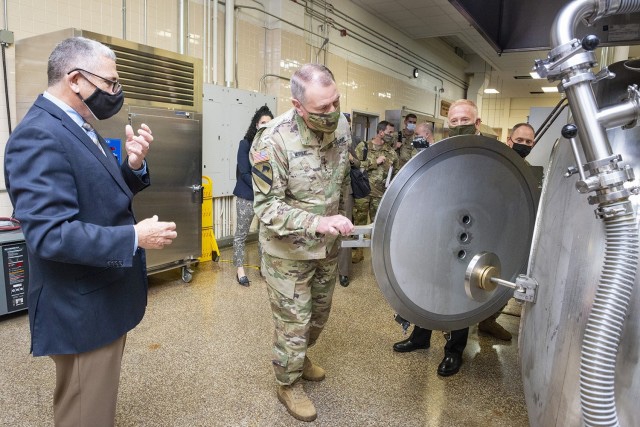
“General Murray’s visit allowed us to successfully demonstrate the important work we’re doing to enhance Soldier performance.” said DEVCOM Soldier Center Technical Director, Doug Tamilio. “The programs and technologies he was updated on are helping advance Soldier Lethality and directly support the Army’s major priorities.”
Story by Jeff Sisto, DEVCOM Soldier Center Public Affairs
Photo by David Kamm, DEVCOM Soldier Center


Do I spy a wide mouth canteen in the first pic?!?! Please field immediately!!
I saw that too. They keep teasing us.
And Snow Camo too!
Wide mouth canteen FTW.
Now I just wish we could get some mid cut boots with better ankle support.